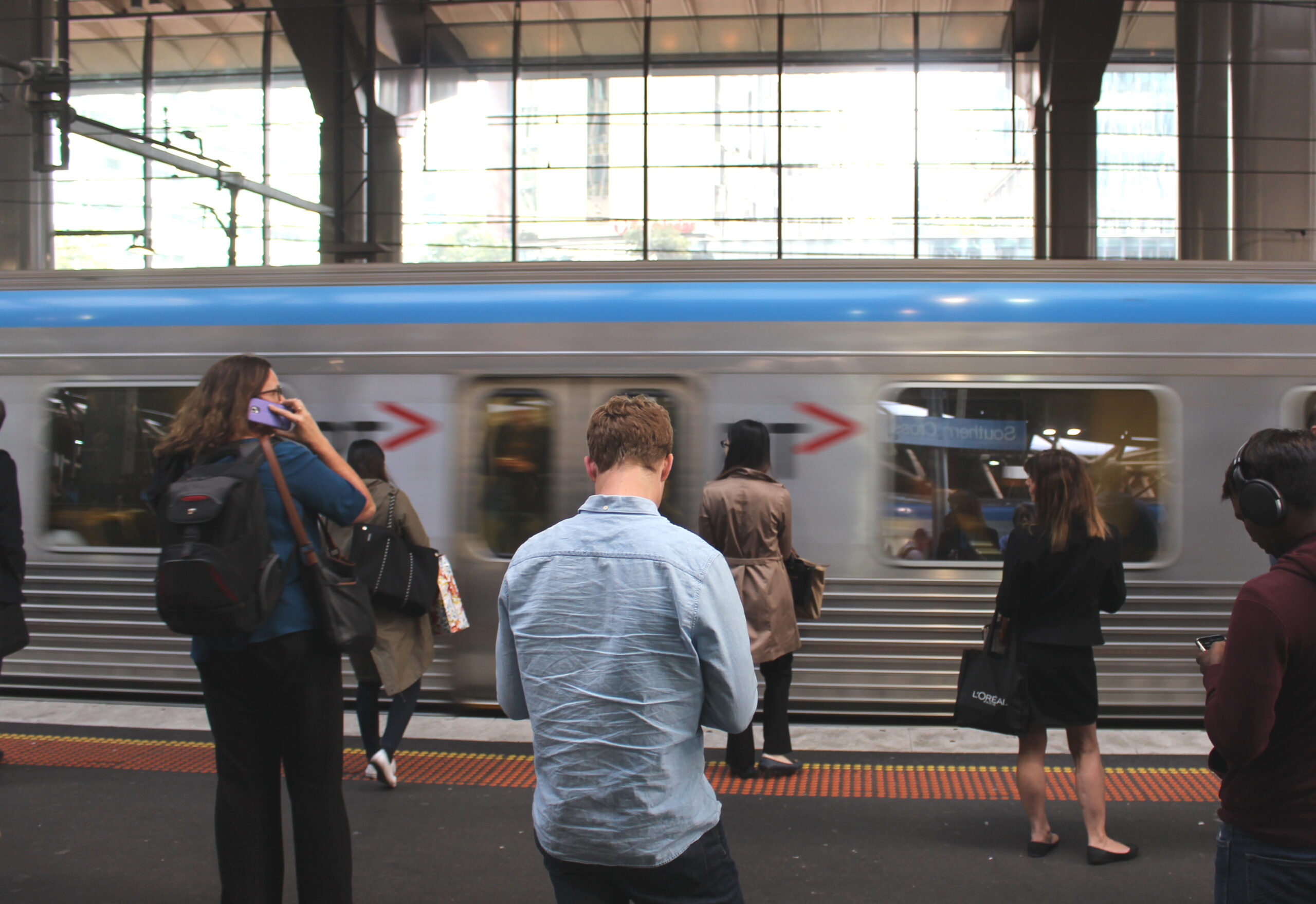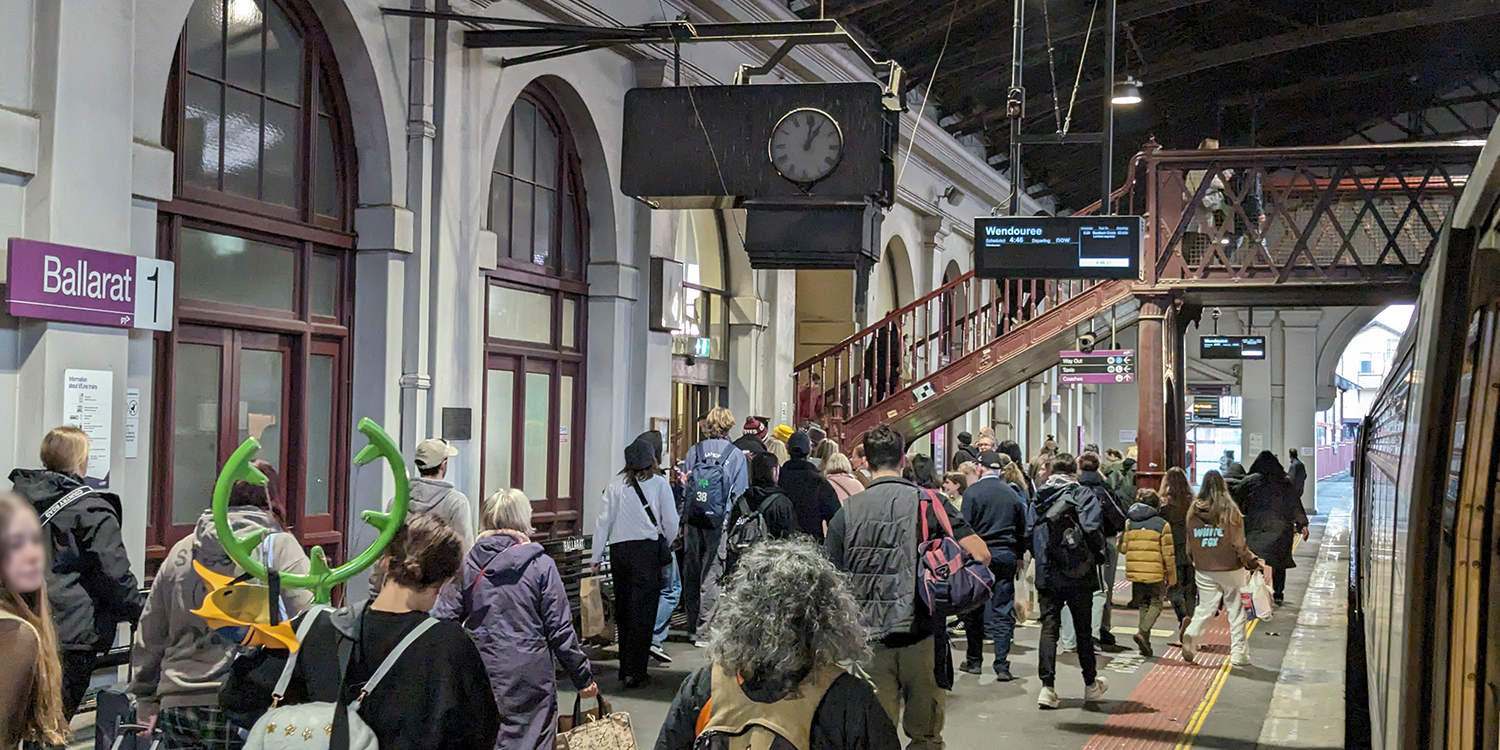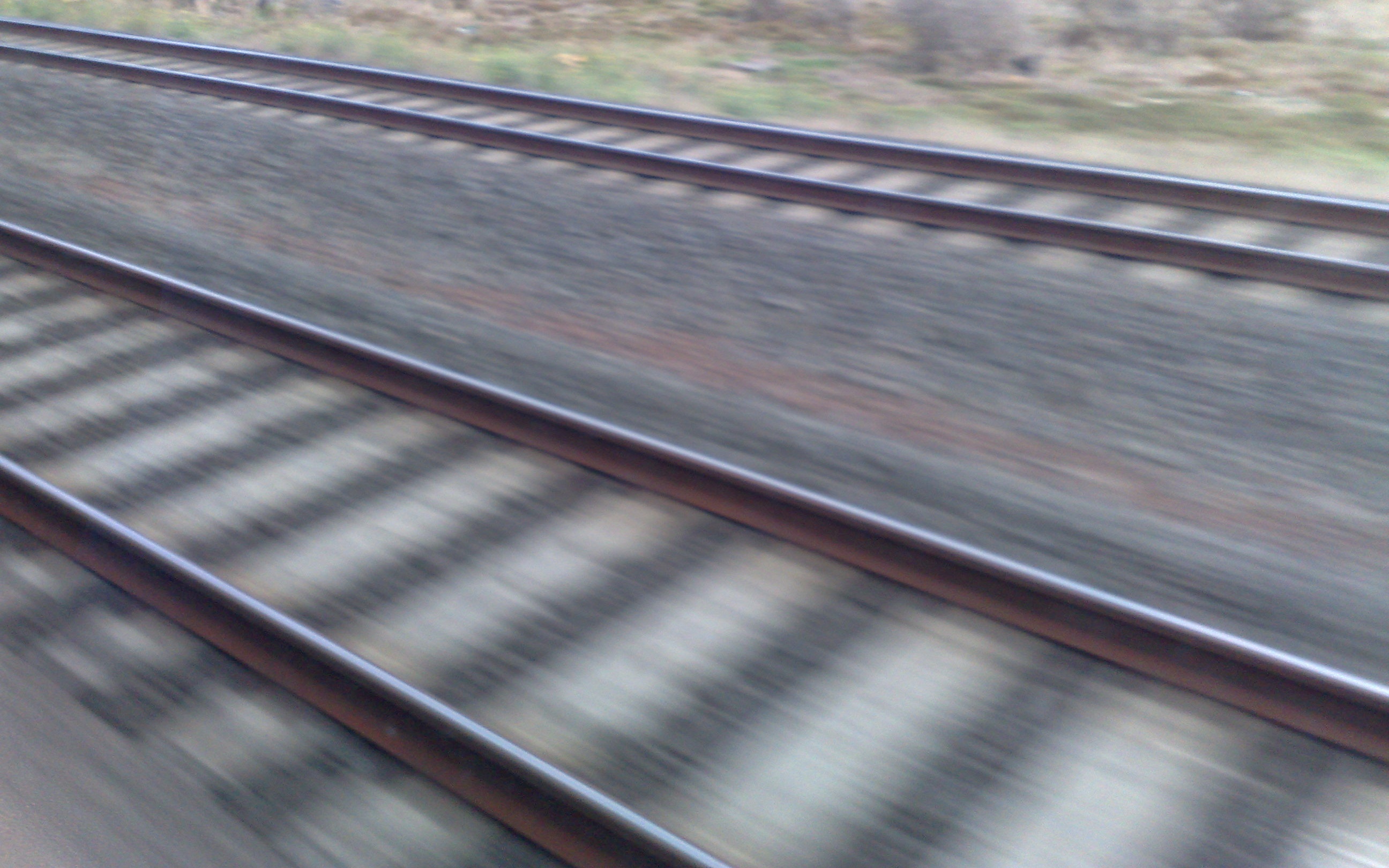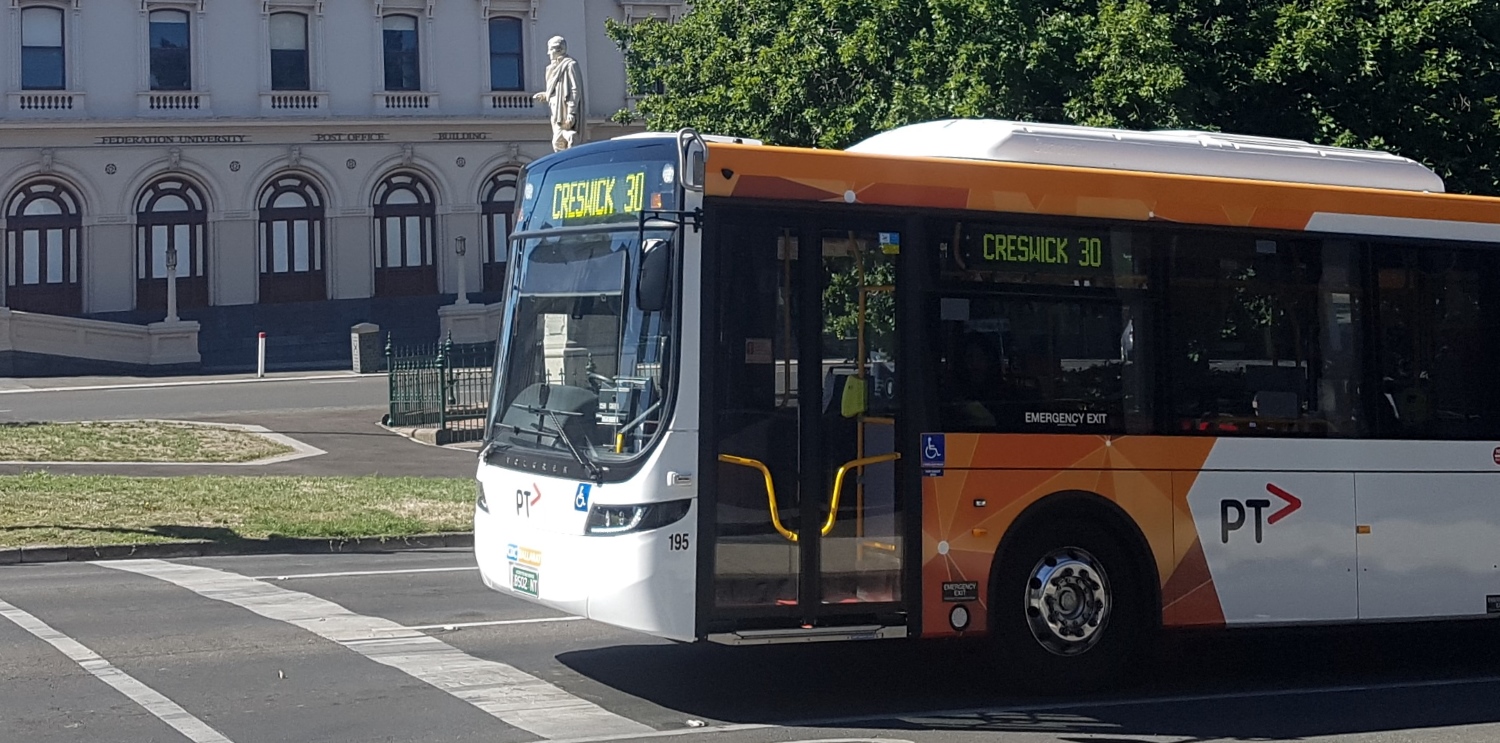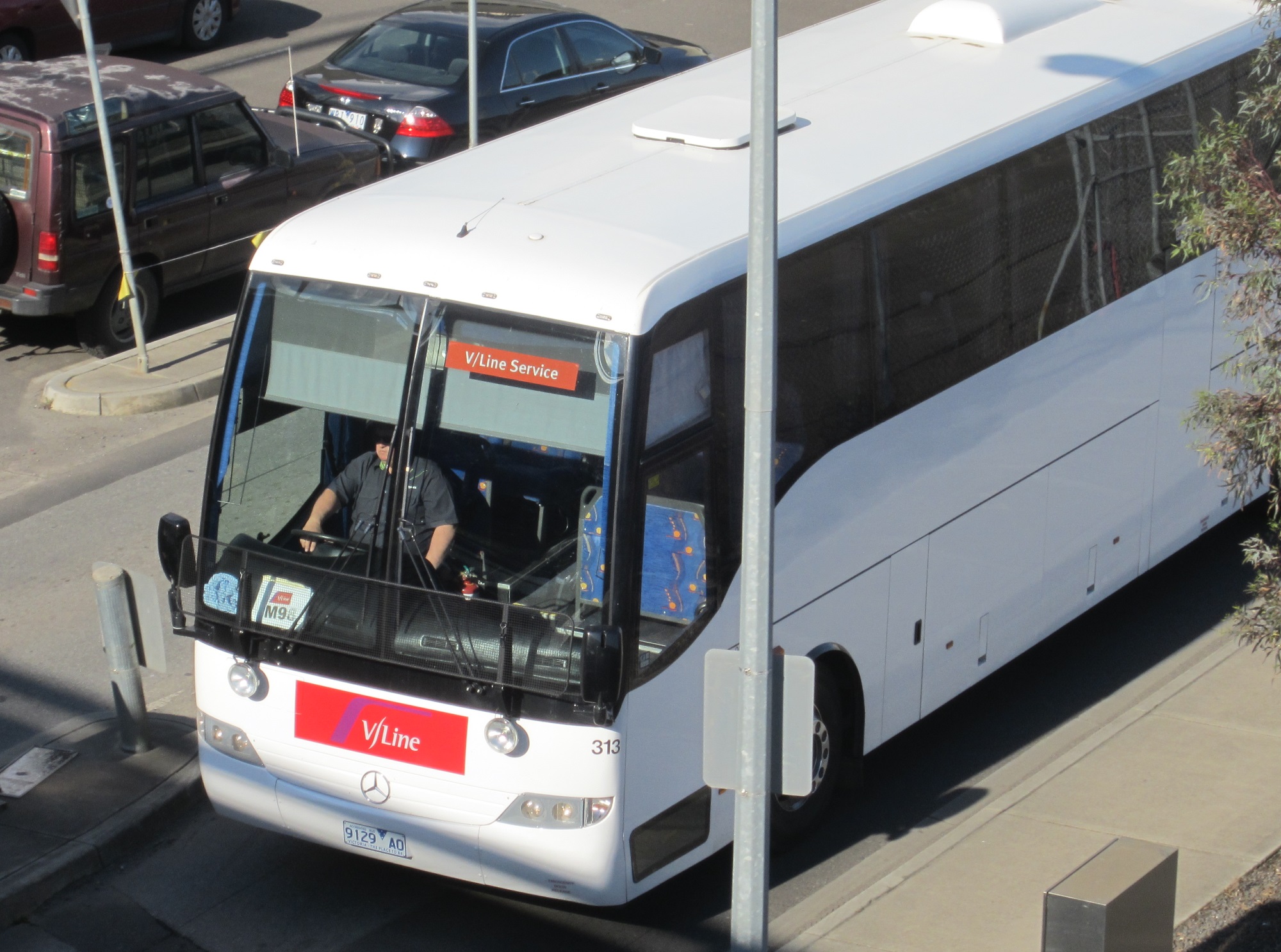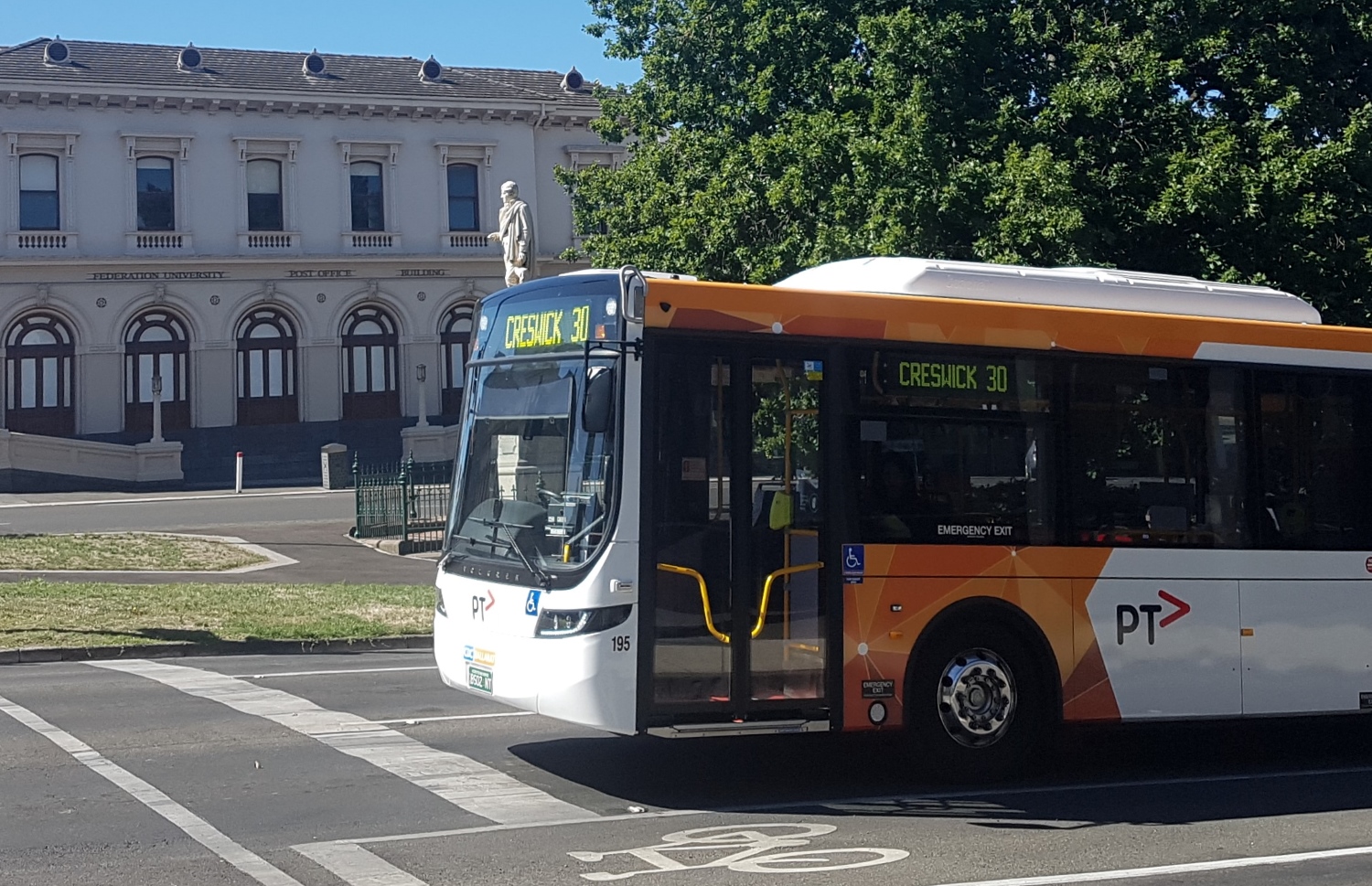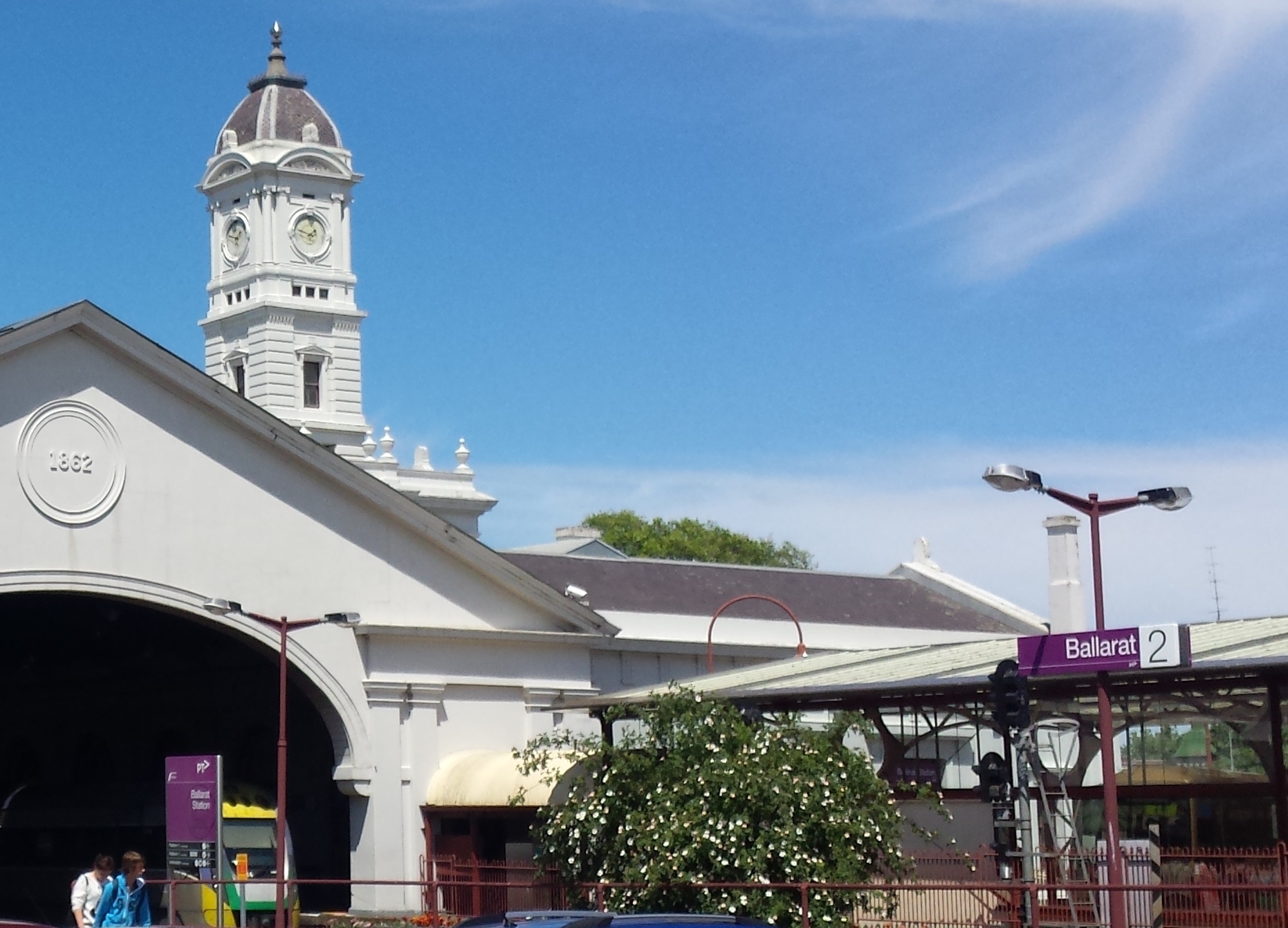Category: Ballarat
-
PTUA Members welcome news of Ballarat Station Upgrade but it needs to be done right
On the 3rd of May, the Public Transport Minister announced that the Victorian government will at long last upgrade the station to meet modern accessibility standards. The upgrade will include the construction of a new pedestrian overpass with stairs and lifts on both platforms. Ballarat station has long lacked crucial accessible connectivity making the station…
-
PTUA welcomes Overland reprieve, calls for long-term investment
The Public Transport Users Association (PTUA) has welcomed the announcement that the Victorian government will contribute funding to keep the iconic Overland train running for another three months. When the South Australian government withdrew its contribution to subsidising this vital passenger link at the end of 2018, the Victorian government stepped up to fund the…
-
PTUA congratulates King on new portfolio, calls for state-federal cooperation on infrastructure
The Public Transport Users Association (PTUA) has congratulated Catherine King on her re-election as the member for Ballarat, and on being appointed Shadow Minister for Infrastructure, Transport and Regional Development. PTUA Ballarat Branch Convener Ben Lever said that this portfolio was crucial to the future of Ballarat and western Victoria. “One of the keys to…
-
PTUA launches Connecting Ballarat proposal
The Public Transport Users Association (PTUA) has launched an ambitious policy document, “Connecting Ballarat”, which calls for dramatic improvements to Ballarat’s bus network. Ballarat’s bus network currently has a lot of problems with indirect, inefficient routes through the CBD, which turn back on themselves in order to call at key destinations in a specific order,…
-
PTUA welcomes rail investment in Ballarat
The Public Transport Users Association has today welcomed the government’s announcement of the details of a $130m project to untangle freight and passenger services in Ballarat. The project will largely separate freight and passenger trains west of Ballarat station, and upgrade the signalling system in the Ballarat area, to allow for more efficient movement of…
-
PTUA welcomes Coalition commitments to regional rail in western Victoria
The Public Transport Users Association (PTUA) has today welcomed the state Coalition’s commitments to improve regional rail in western Victoria if elected in November. A study commissioned by a group of councils in western Victoria in 2017 called for a swathe of improvements to public transport in their regions, including returning passenger trains to Horsham…
-
Ballarat commuters shortchanged by piecemeal track duplication
The Public Transport Users Association (PTUA) has today criticised the state government’s piecemeal approach to track duplication works near Bacchus Marsh. The Melbourne Metro Authority, which is delivering the Ballarat Line Upgrade (BLU) project, announced changes to the project in December 2017, including changing the location of one of the crossing loops. The project originally…
-
PTUA welcomes extra Night Coach services
The Public Transport Users Association (PTUA) has welcomed the government’s announcement of extra Night Coach services for regional Victoria. Passengers on the Ballarat and Bendigo lines will benefit from new Night Coaches leaving Melbourne around 1am, in addition to the existing coaches which leave around 2am. This fills a gap of approximately 2 hours in…
-
PTUA supports call for better services for Ballarat
The Public Transport Users Association today welcomed Committee for Ballarat’s new #59minuteballarat campaign, which calls for full duplication of the line to Ballarat, electrification of the line to Melton, and faster, more frequent and more reliable services. PTUA Ballarat Branch Convener Ben Lever said the region needs a long-term bipartisan plan to deliver the infrastructure…
-
Ballarat bus passengers still waiting
A new bus timetable for Ballarat will come into effect on 27 August to align with new train times, but the Public Transport Users Association note that most problems with the timetables still remain. Since January 2017, Ballarat bus timetables have been excessively padded out, with overly-generous estimates for how long parts of a journey…
-
PTUA welcomes funding of bus interchange at Ballarat station
The Public Transport Users Association (PTUA) today welcomed the announcement of $5 million funding for the construction of a new bus interchange at Ballarat railway station, to be completed in 2018. The bus interchange had been included in draft plans during public consultation, but notably was not funded in Ballarat Station Precinct works announced in…
-
PTUA forms Ballarat Branch
For the last 40 years, the Public Transport Users Association (PTUA) has been fighting for better public transport in Melbourne. The Geelong branch of the PTUA has existed for over a decade, and has campaigned for the whole of regional Victoria. The PTUA is pleased to announce the formation of a Ballarat branch, which will…
